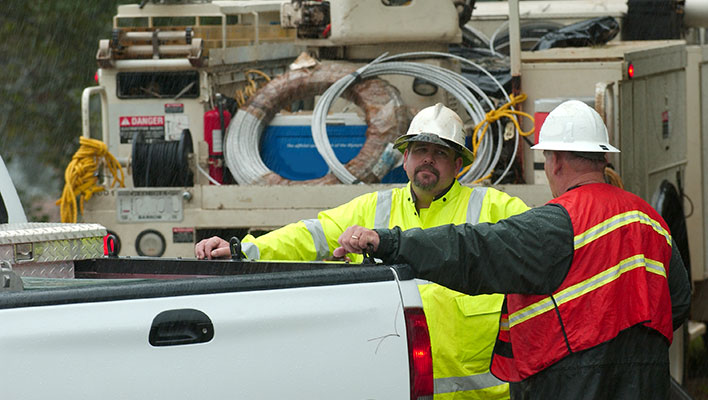COVID-19 vaccinations are rolling out, and while this is excellent news, it still does not eliminate the question of how utilities are keeping workforces healthy and safe from potential infections. Being a pro-active industry, process and procedure as viewed through the looking glass of employee health has been honed and honed again to make sure power companies are managing their coronavirus response right. And while utilities are ecstatic to see the distribution of the vaccines, they are still cautious when it comes to dealing with this deadly virus.
During the beginning of the pandemic, the Edison Electric Institute (EEI) estimated that as many as 40% of an electric companies’ staff could become sick, quarantined, or forced to take PTO to care for ill family members. It was an alarming statistic and one of the few early warning signs that spurred the industry into action. Many ideas that were tossed about on how to keep crews healthy while maintaining high service levels have worked well, but some were quickly discarded or over-hauled after causing slowdowns or problems in reporting. After a year of trial and error, these three tips have risen to the top for utilities across the globe.
1. Be Open to Hybrid Operating Models
Utility employees are everywhere – out in the community, inspecting infrastructure, visiting customer’s homes, grouped in the same teams, working in call centers, and managing from centralized commands. Initially, that model remained intact, but it became clear that it was not feasible for the new reality COVID-19 created. What if one crew member tested positive? Quarantining the rest of the crew would not allow the completion of incoming jobs. What if an infection happened in the call center or centralized command? The call center would be down, or the operations team wiped out for at least two weeks.
Many utilities are allowing customer call representatives to work from home. Even operation managers are now working remotely using specialized solutions from companies like ARCOS. And pods have been created for work crews. Instead of building crews out of first responders, teams made up of pre-determined units are assigned work orders. This eliminates the worry of mixing team members and exposing a larger group to a possible positive coronavirus test.
Being open to hybrid operating models is an essential part of keeping employees healthy.
2. Find New Ways to Distribute Work
The morning shuffle used to require an “all-hands-on-deck” check-in meeting. Not any longer. Most utilities are choosing to make these informative gatherings a remote affair. The technology exists to turn in-person meetings that assign work and sort out resource challenges into a virtual engagement.
Automation can not only assign crews, but work tickets and teams can accept jobs on their mobile devices in the field. This ends the risk of anyone accidentally infecting another due to being required to be in the same place simultaneously. Theoretically, organizations with voluntary permission from employees could check off if a crew member has been given the vaccine and make it part of their skillset, producing a safer environment for all and granting a manager the ability to put together inoculated work teams.
Technology can help distribute work and foster a healthier workplace.
3. Keep Communicating and Constantly Review Policies
Utilities have always taken a “safety-first” approach to their culture and operations. Now, “healthy-first” is being added. It is more than taking temperatures and recording them in a database. Leaders are consulting with everyone in their organizations, top to bottom, to identify where processes may be failing or need strengthening to ensure requirements such as keeping a six-foot distance between employees can stay implemented. They also share the information and policies that are working with other utilities in the industry.
Complete weekly and monthly walk-throughs of every policy and procedure are being performed, pinpointing improvements in previous working methods focused on maintaining employees’ health. Safety Management Systems and Incident Command Structures are being reviewed, revised, and instituted, as necessary. COVID-19 has compelled the industry to leave no stone unturned so crews can always remain safe, healthy, and strong.
Everyone from the chain of command to the field operative must continuously be vocal and in an open conversation to keep organizations healthy.
Vaccines are a fantastic leap forward and a welcome sign that maybe, just maybe, the light at the end of the COVID-19 tunnel is getting brighter and a tad bit closer. Let us hope so and continue to share what is working to keep workforce management on track.




